What is Atlas?
Atlas is a lifestyle wearable that leverages 3D capturing technology to help those who are visually impaired navigate complex environments.
The challenge
Do you need to use a GPS to get home from work, or do you know the route by heart? What if there is bad traffic or a road block? Would you know another way to get home?
For people with visual impairments, environments that are complex and that change frequently can be disorienting and dangerous. And while there are many devices and tools available to help with point-to-point navigation, most of them aren't very effective when navigating environments that change at infrequent intervals.
For this project, I wanted to begin an exploration into how an emerging technology like 3D image capturing technology could be used to make it easier for people with visual impairments to navigate complex environments.
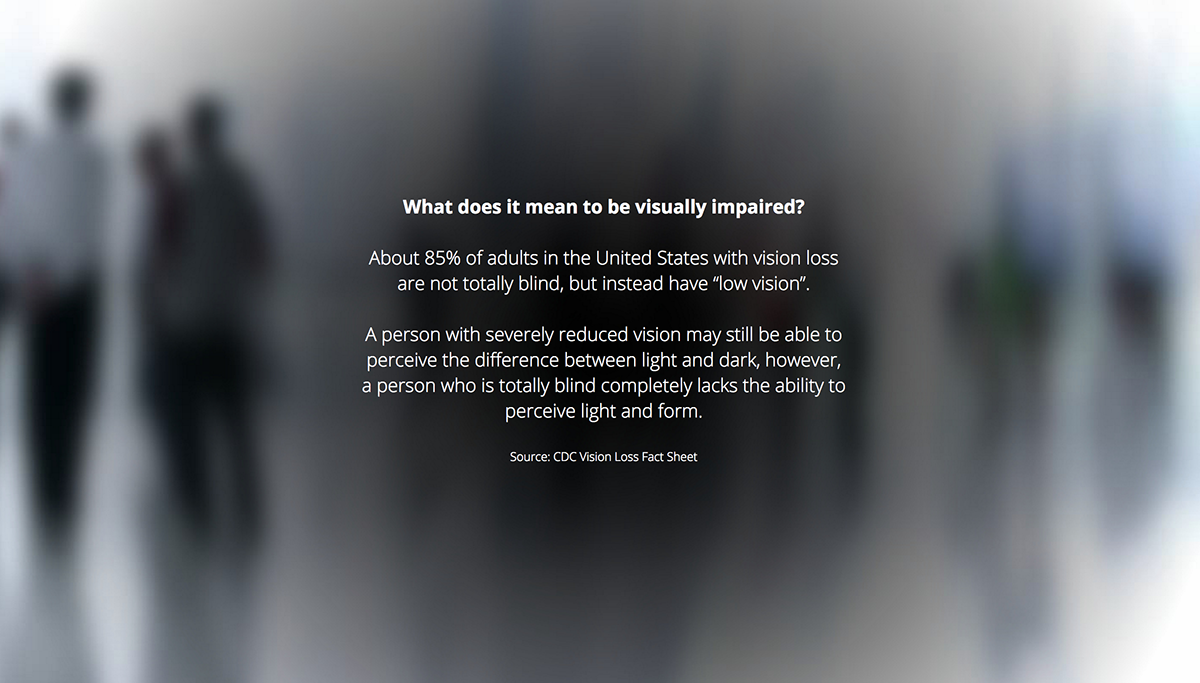
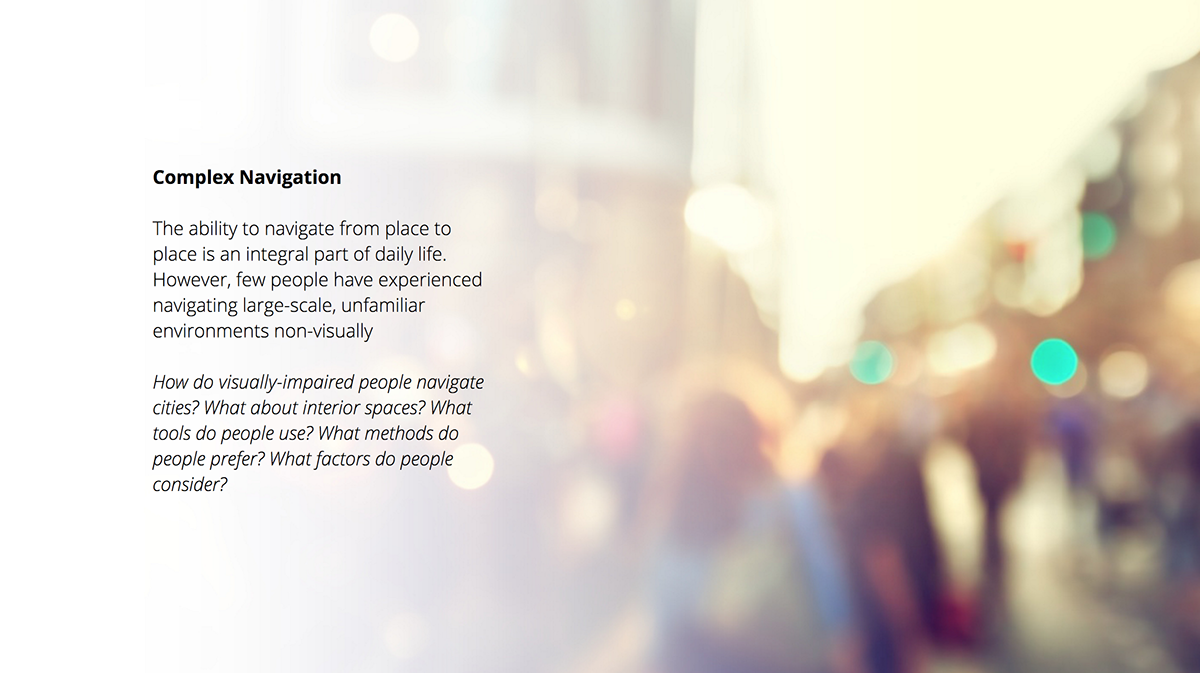
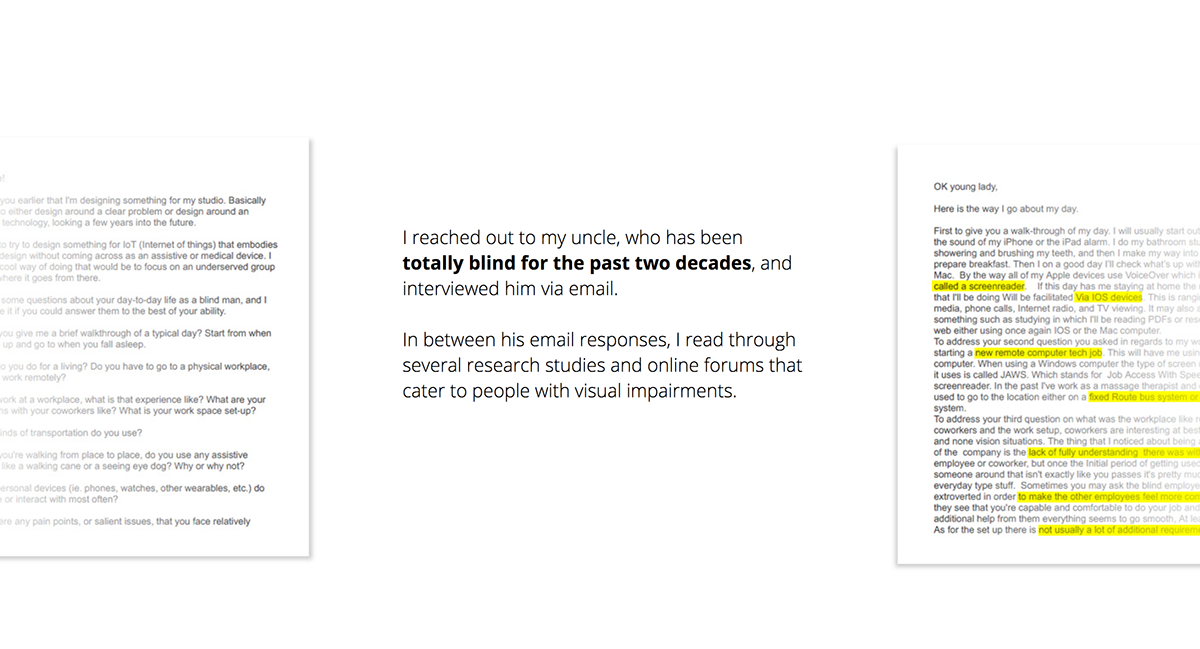
There were some specific questions I had:
1. What are the current behaviors and motivations of people with visual impairments?
2. What are the pain points in the navigation process?
3. What technology is currently used to help with navigation?
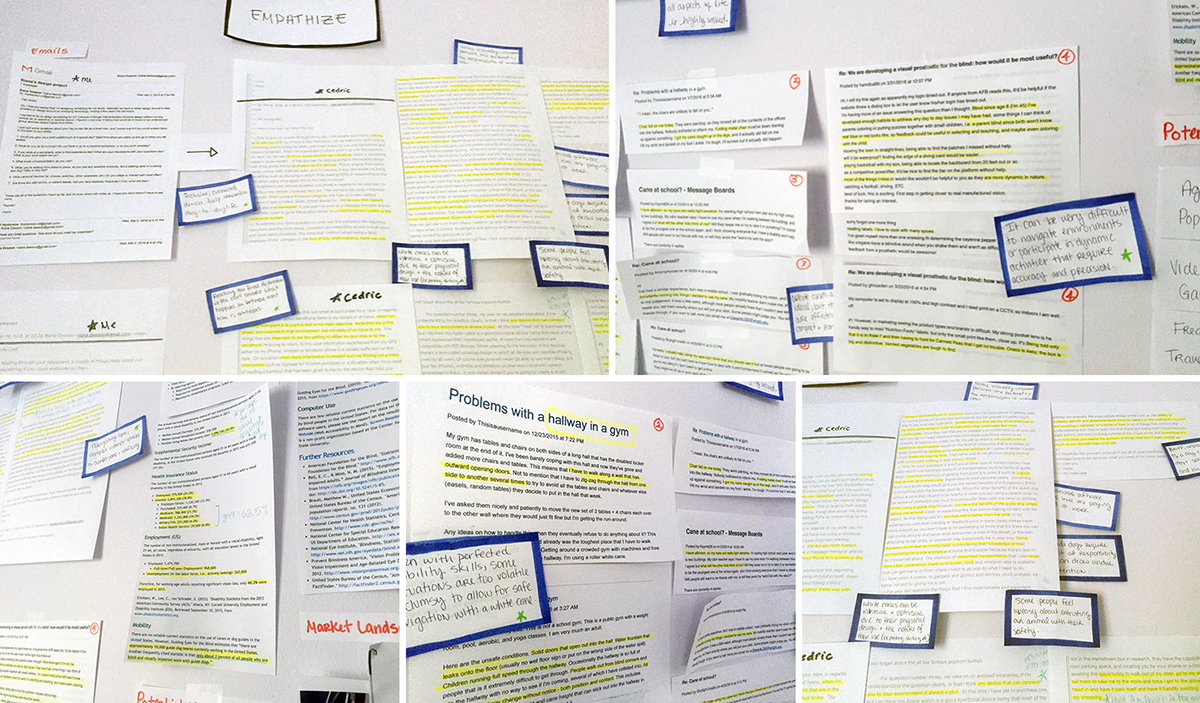
Research notes
At this point, I had spent a lot of time sitting at my computer. Because I had limited access to research subjects, I used what I had gathered so far to conduct a quick bodystorming exercise, wherein I attempted to navigate the lobby of an office building using some of the iPhone apps that my uncle told me about. From here, and after combing through my notes, I was able to identify some key insights:
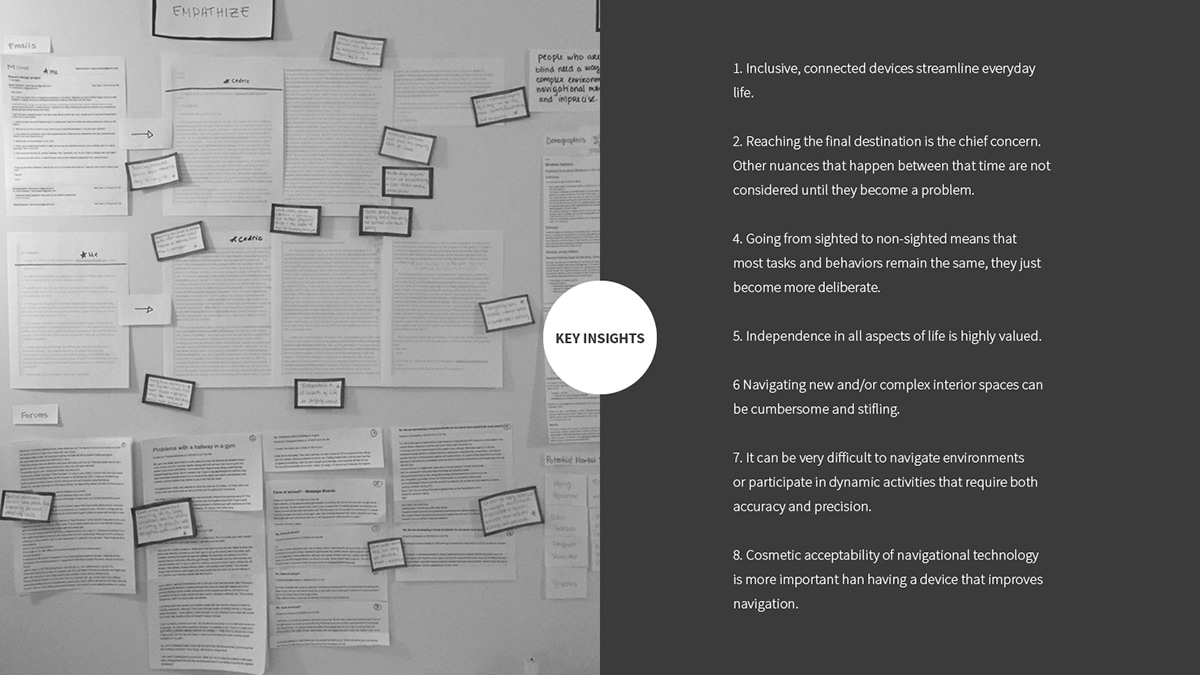
I analyzed information I got from my research and found some common behavioral patterns among the potential users. Based on this, I developed four provisional personas:
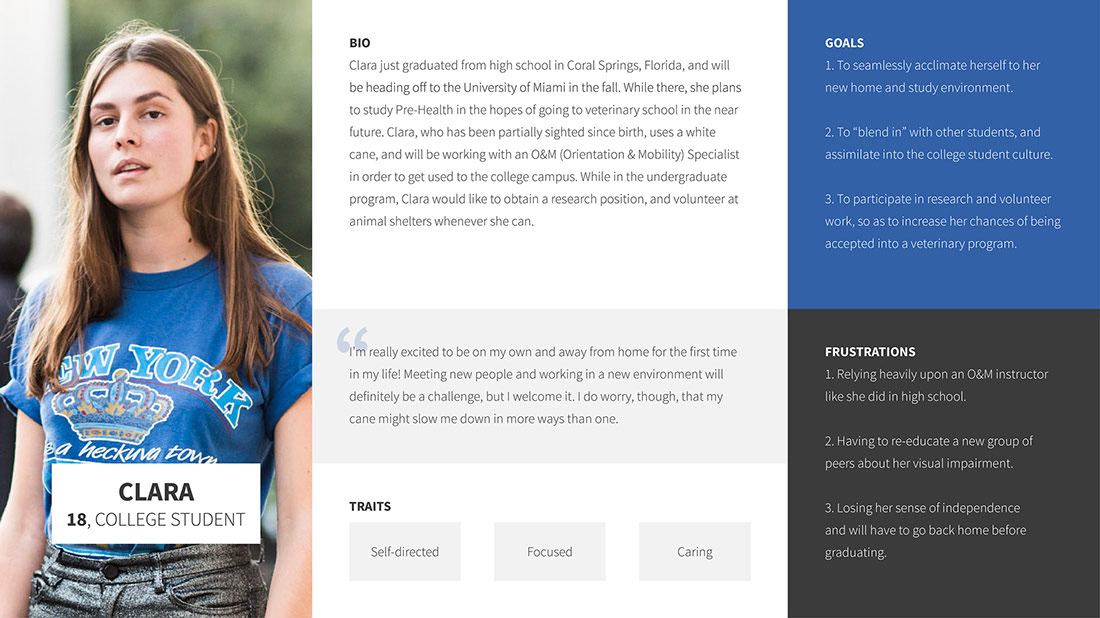
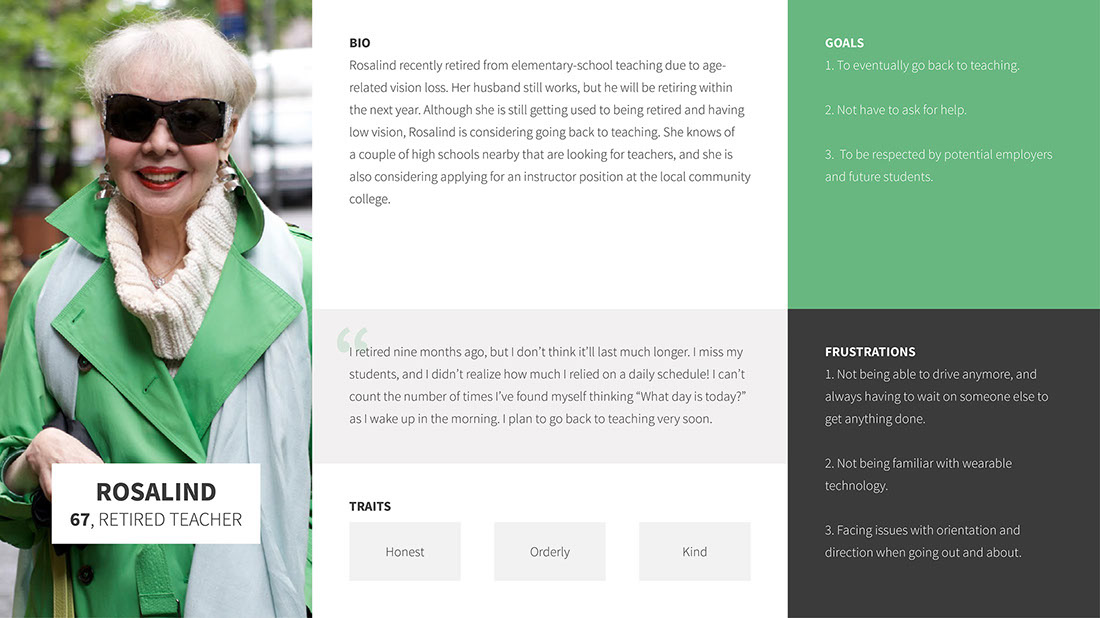

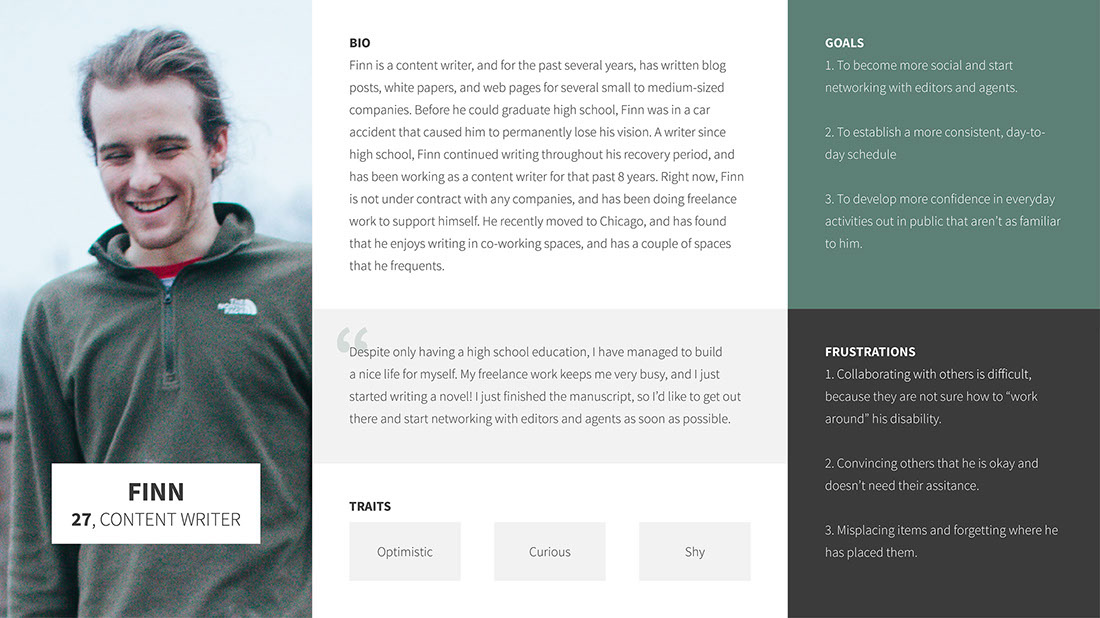
The personas' main goals and frustrations helped me to formulate the problem statement:

To tackle this problem, I recorded four criteria that would drive the design:
1. Must be persistent and allow for constant access.
2. Must sense and model its context.
3. Must integrate into the user’s lifestyle and adjust its functional modes accordingly.
4. Must be simple and unassuming.
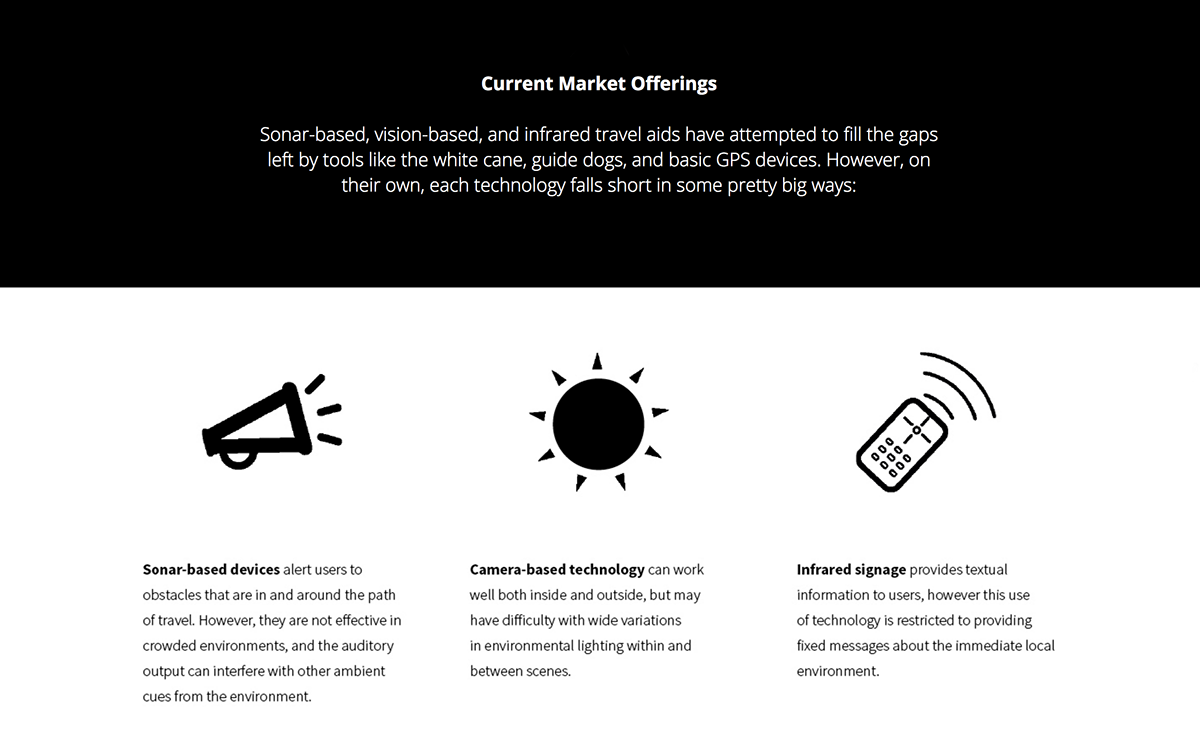
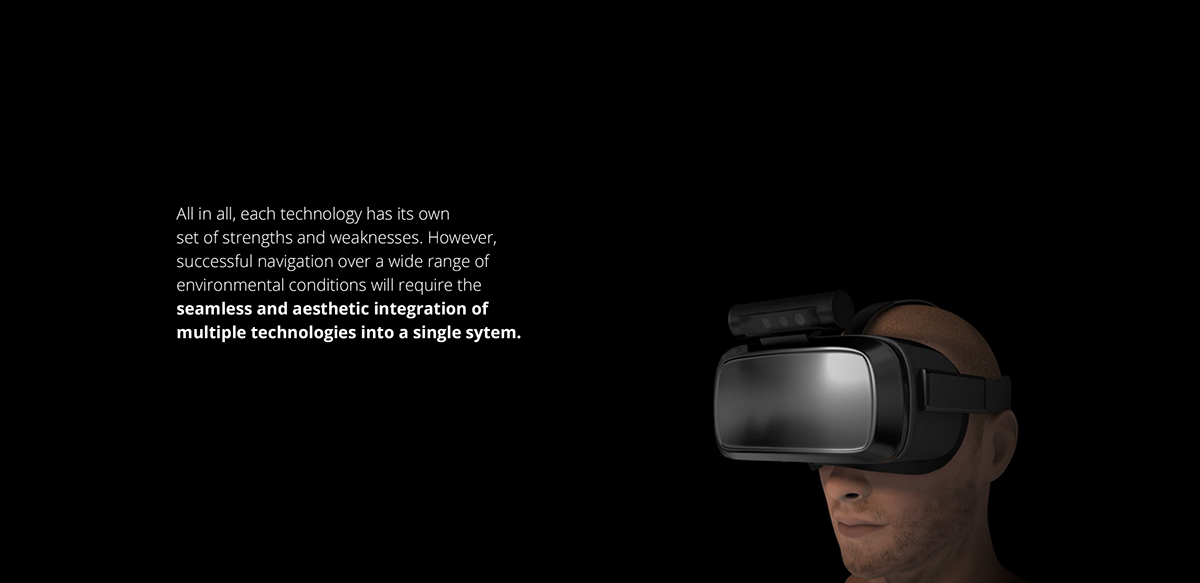
I quickly performed an initial brain dump and presented my sketches to my colleagues. Most people favored a clip-on concept over a headset or a wristband. However, many people wondered where the clip-on would fit on the body in order to remain accessible, but still discreet.

I went back to my research and came upon the Intel® RealSense™ camera technology and SDK. Backed by this emerging technology, I began to conceptualize a wearable that uses a 3D camera to assist in navigation.
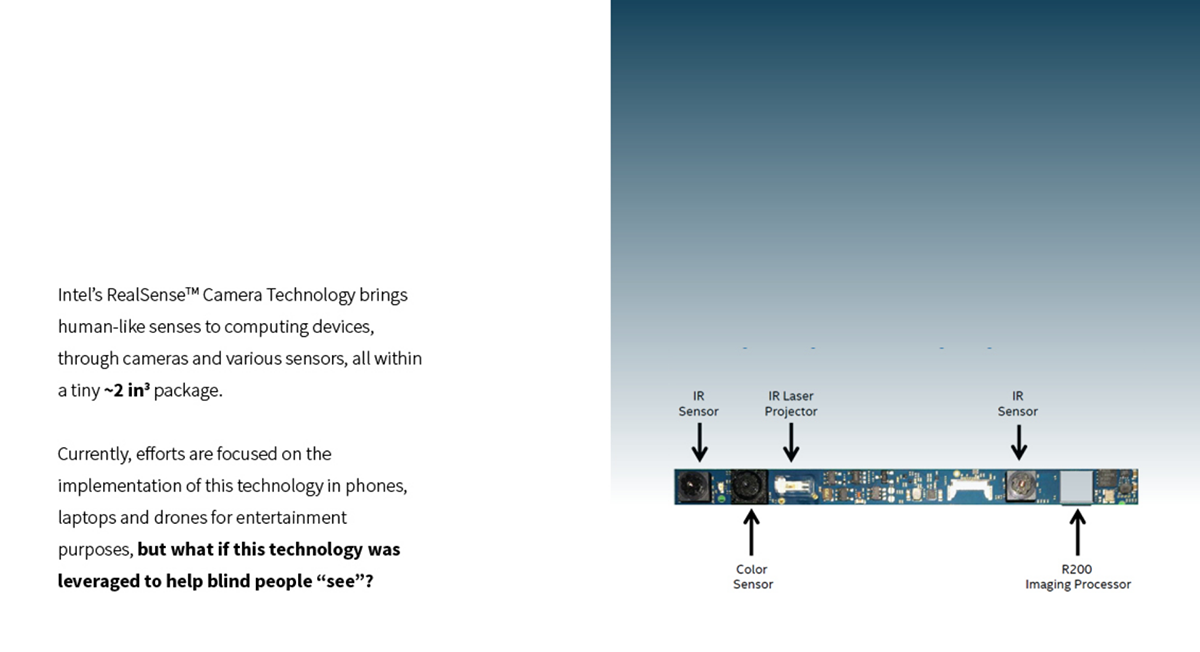
In thinking of ways in which I could apply some of the five design criteria to demonstrate a simple, clean aesthetic, I sought out products that placed a delicate emphasis on tactility, and I also referenced forms with subtle material juxtapositions and variations in texture.
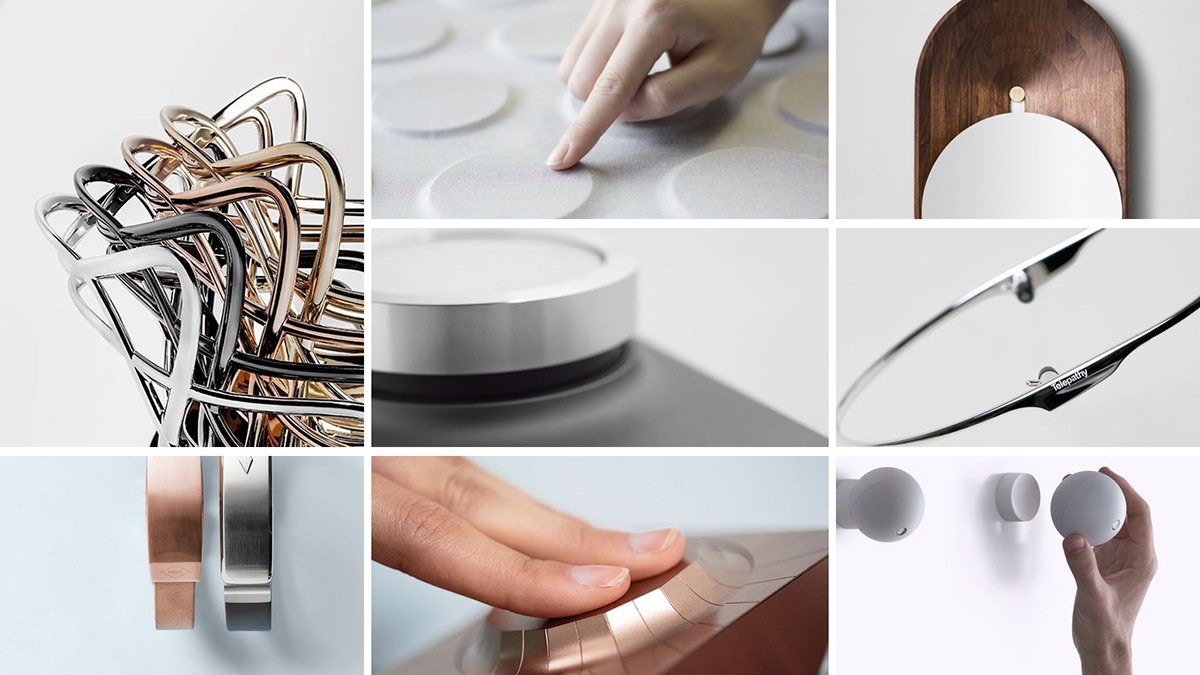
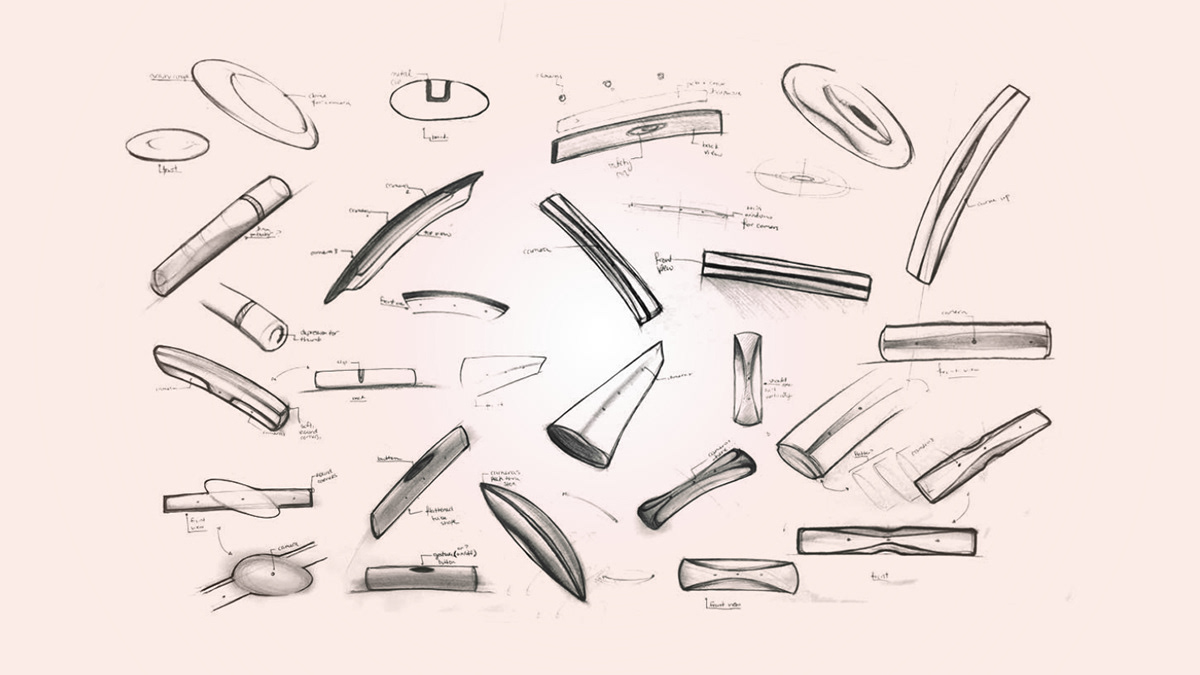
Both the physical design and the experience design went hand in hand, challenging me to rethink decisions in order to remain true to the product vision. I developed a “Wizard of Oz” prototype to explore different ways of expressing automation states.
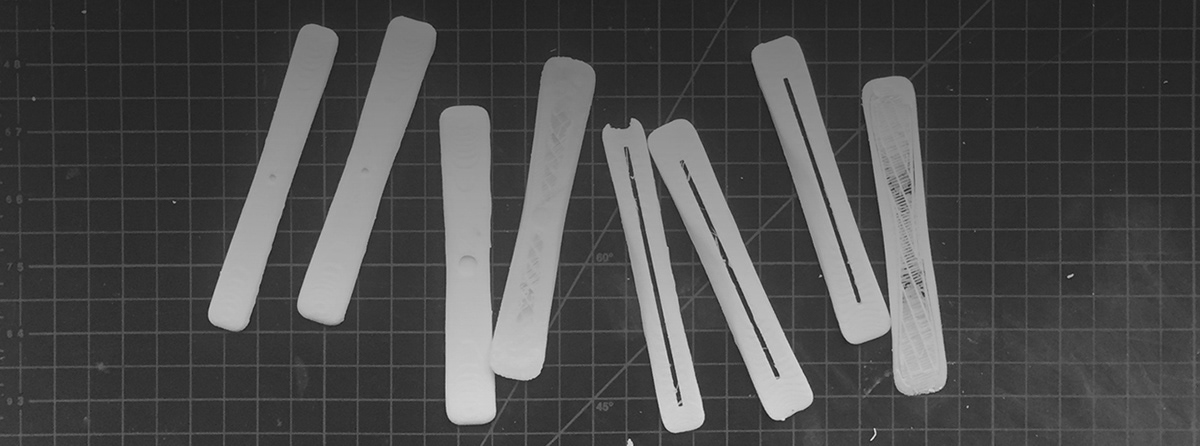
3D printed prototypes
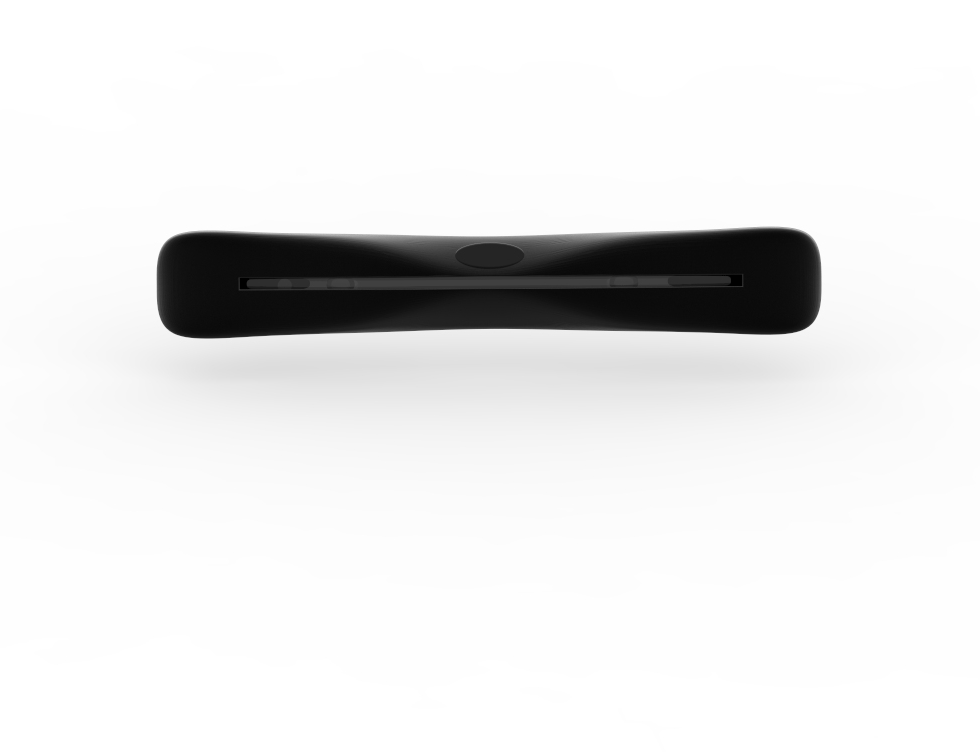
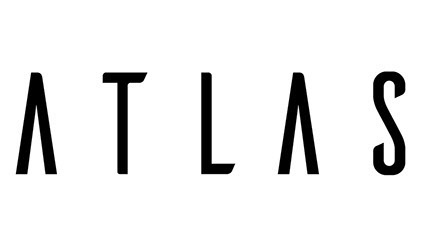
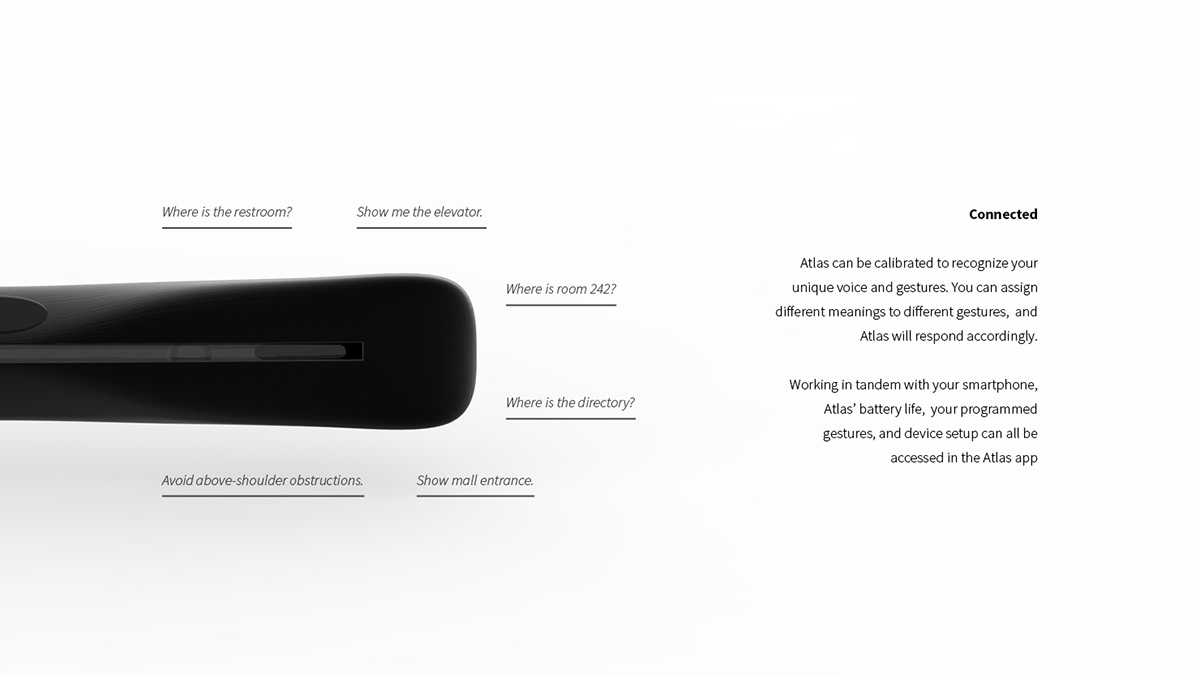
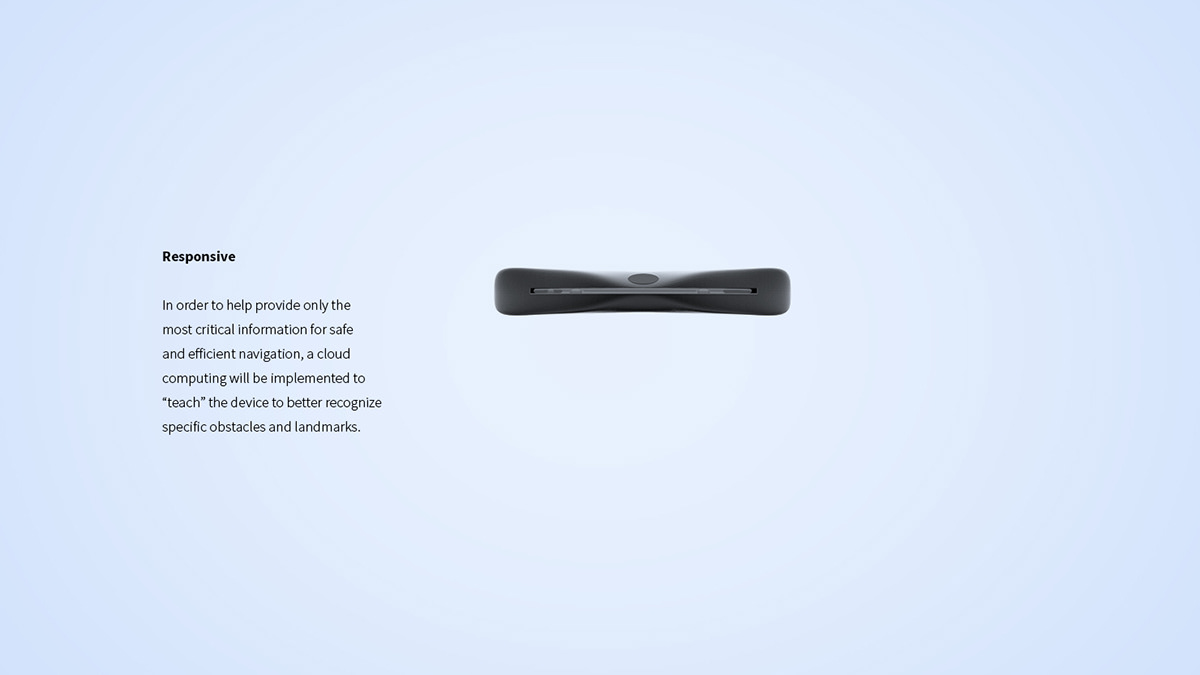
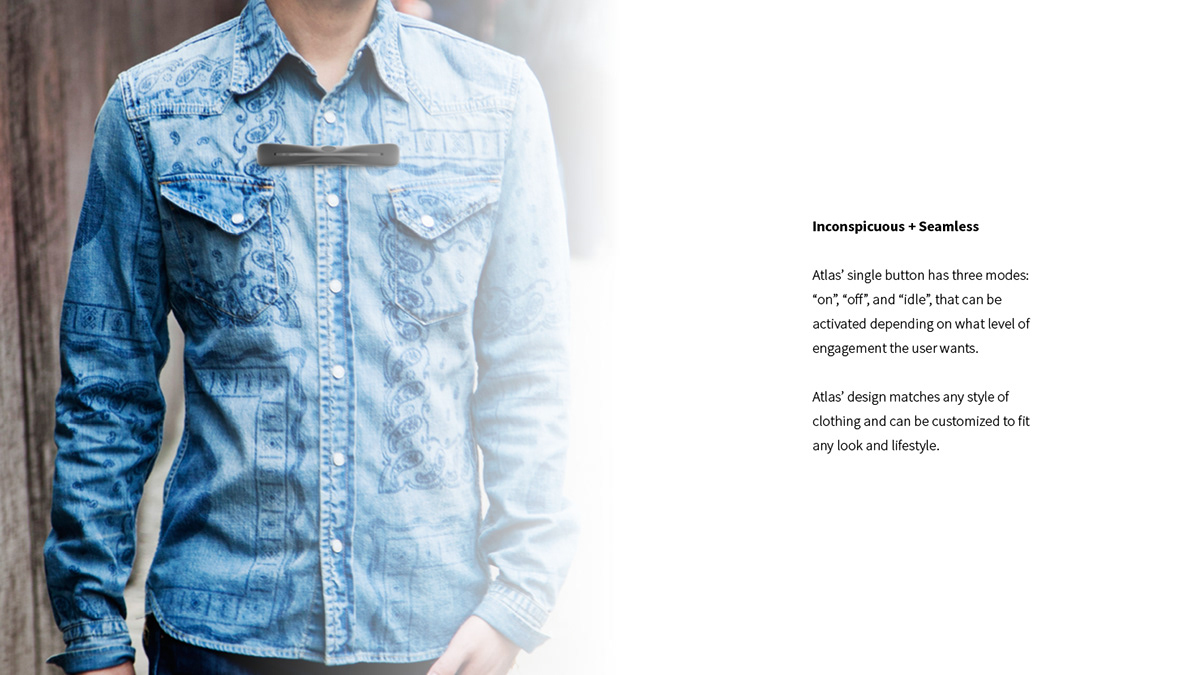
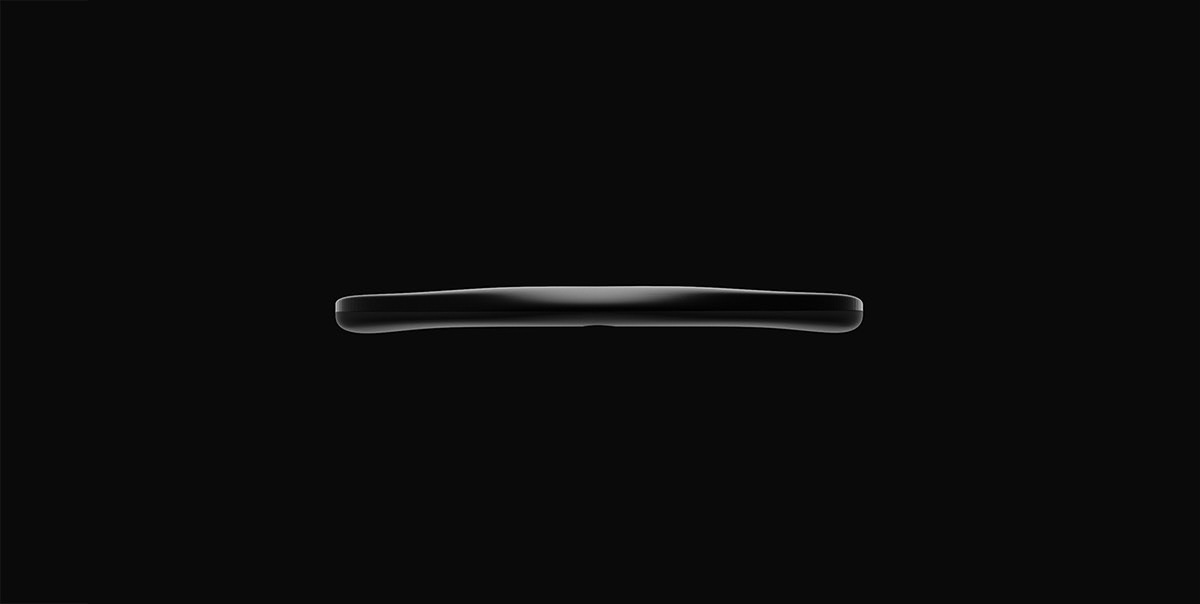
What's next?
So, there's a lot more to be done here. My main goal with this conceptual design was to think through how a nascent technology could be used for function instead of entertainment. Technological advancements suggest that Atlas could become a much more comprehensive wearable in the very near future. In anticipation of this, I would like to take a step back and present this concept to my potential user group.
Would Atlas really help with bringing some clarity to environments that are inconsistent and confusing? Is this type of wearable appealing? Is a wearable the best solution? What other use cases outside of blind navigation should be considered in order for Atlas to be an inclusive product?
In order to answer these questions, there are a few things that I would like to evaluate: overall receptiveness to this type of product; responsiveness to different types of feedback (ex. haptic, aural, etc.); preferences for placements of buttons, indicators, and gesture-based controls; preferences for materials, size, colors, and other aesthetic elements; accessibility of digital interface.
From there, I will be able to iterate on this design, so I can make the necessary refinements that will help support the viability of the product.
